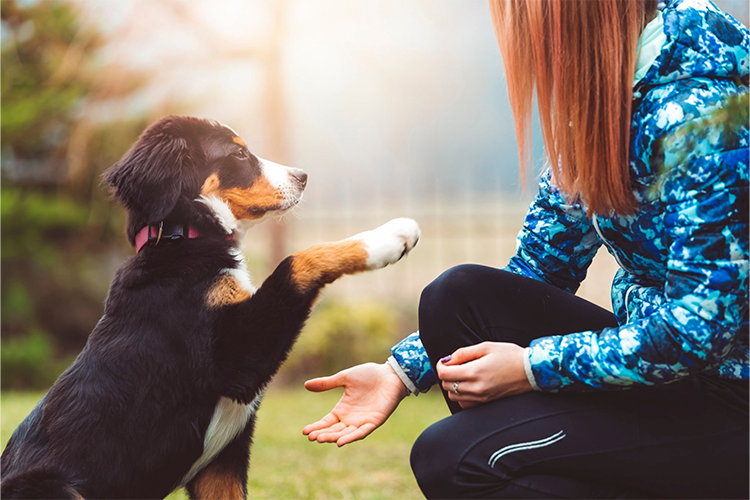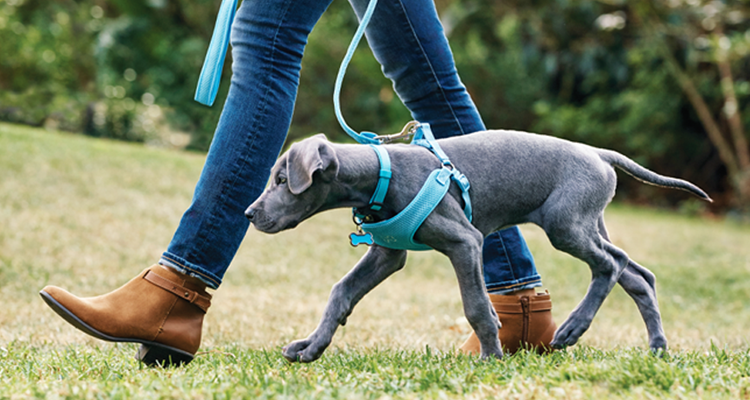Dog Training for First-Time Pet Owners: What You Need to Know
Dog Training for First-Time Pet Owners: What You Need to Know
Blog Article
Novice's Guide to Successful Pet Training in your home
Efficiently training a canine at home needs a nuanced understanding of canine behavior and reliable interaction techniques. Developing clear training objectives, utilizing top quality rewards, and keeping consistency across household participants are vital components. Integrating training into day-to-day regimens can improve both involvement and retention.
Recognizing Canine Habits
Understanding canine behavior is crucial for reliable training and fostering an unified relationship in between people and their canine buddies. Pet dogs interact mostly with body movement, articulations, and faces, making it vital for proprietors to interpret these signals properly. Recognizing behaviors such as tail wagging, growling, or shrinking can give insights right into a pet dog's psychological state and intentions.

Usual behavior problems, such as hostility, anxiousness, or extreme barking, frequently come from misconceptions or unmet needs. Observing and attending to these problems quickly can protect against escalation and guarantee a positive training experience. By cultivating a deep understanding of pet habits, owners can tailor their training methods to match their canine buddies, eventually resulting in a mannerly and contented family pet.
Necessary Training Tools
A well-equipped training area can dramatically improve the effectiveness of dog training at home. Vital training devices guarantee that both the pet dog and the fitness instructor can engage in effective sessions that promote learning and bonding.

Buying a strong chain and a comfy, well-fitting collar or harness is important for security and control. These tools aid develop borders and ensure the dog stays safe and secure throughout training. Additionally, an assigned training area, complimentary from disturbances, help concentration for both the instructor and the pet.
Training aids such as training pads, cones, or agility devices can additionally enhance the experience by presenting range and challenges. Having a notebook or digital application for tracking progress can be invaluable, enabling you to note successes and areas for enhancement. Utilizing these vital tools will certainly develop a positive training environment and lay the structure for efficient knowing.
Developing a Training Routine
Establishing a constant training routine is crucial for reliable dog training in your home. A well-structured regular not just assists in strengthening wanted actions yet also supplies your pet with a complacency and predictability. To develop a reliable training regular, begin by recognizing details training objectives, such as basic commands, leash walking, or housebreaking.
Select a designated time daily for training sessions, ideally when your canine is receptive and sharp. Procedure needs to be short, roughly 5 to 15 minutes, to preserve emphasis and avoid fatigue. Uniformity in timing and setting will boost your pet's understanding experience.
Include training into everyday activities to enhance skills. Technique commands throughout walks or nourishment, which integrates learning into natural routines. Additionally, continue to be versatile and readjust the regular as needed, fitting your pet dog's power levels and state of mind.
Positive Support Strategies
Favorable reinforcement techniques are fundamental to effective dog training, advertising desired habits via incentives rather than penalty. This method utilizes favorable stimulations, such as treats, appreciation, or playtime, to motivate pets to repeat particular activities. The cornerstone of this technique is timing; benefits should be offered right away complying with the wanted actions to produce a clear association.
When implementing favorable support, it is important to choose rewards that are encouraging for your dog. High-value treats, such as tiny items of hen or cheese, can be especially effective during training sessions. Furthermore, varying the rewards can preserve your pet dog's passion and interest.
Start with easy commands, like "sit" or "remain," and gradually development to a lot more intricate jobs. Uniformity is essential; make sure that all member of the family make use of the very same commands and incentive systems to prevent complication.
In addition, it is essential to remain person and stay clear of irritation. Pets, like human beings, find out at YOURURL.com their own speed. By fostering a supportive training environment via positive support, you can improve your dog's learning experience while reinforcing the bond in between you and your fuzzy buddy, preparing for successful training results.
Typical Educating Challenges
While training a pet dog in the house can be a fulfilling experience, it usually comes with a set of usual challenges that can examine both patience and uniformity. One common issue is distraction. Pet dogs may end up being easily averted by noises, movements, or perhaps aromas in their environment, making it hard to keep their focus throughout training sessions.
An additional challenge is inconsistency in commands and support. It can confuse the dog and impede progression if household participants use various cues or incentives. Developing a unified technique is vital for effective interaction.
In addition, pet dogs can experience aggravation or anxiety, specifically if they do not recognize what is anticipated of them. This can lead to unfavorable habits, such as chewing or barking.
Lastly, the timing of reinforcement is essential (Dog training). Postponed incentives can lessen the efficiency of favorable support, as pet dogs might stop working to connect the habits with the benefit
Getting over these challenges needs commitment, clear interaction, and an organized training strategy. Recognizing and attending to these usual obstacles will certainly lead the way for an extra satisfying and successful training experience at home.
Final Thought
To conclude, successful dog training at home necessitates a detailed understanding of canine actions and reliable communication methods. By establishing clear training objectives and making use of top quality deals with alongside favorable reinforcement, the training procedure ends up being more gratifying for both the pet dog and the trainer. Patience, versatility, and uniformity are essential components that assist in learning. Ultimately, integrating training right into everyday regimens enhances the look here bond in between pet and proprietor, making the experience both effective and satisfying.
Establishing a constant training routine is crucial for efficient dog training at home.Positive support techniques are essential to reliable pet dog training, promoting desired actions with benefits rather than penalty (Dog training). By cultivating a helpful training environment through favorable reinforcement, you can enhance your dog's knowing experience while strengthening the bond between read review you and your hairy friend, laying the foundation for effective training results
In final thought, successful dog training at home requires an extensive understanding of canine actions and efficient interaction strategies. By developing clear training objectives and using top quality deals with together with positive reinforcement, the training process becomes much more rewarding for both the pet dog and the trainer.
Report this page